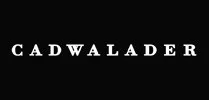1. Overview
In 2024, the European fund finance market demonstrated impressive resilience and versatility. Despite slow fundraising in the wake of the 2023 US banking crisis and one of the most significant rate hike cycles in recent history, fund finance origination has remained strong, driven by a shift towards refinancing and Net Asset Value (NAV) finance. Whilst fundraising levels are at their lowest levels since 2016, top-tier sponsors have been able to raise record-sized "mega funds", benefitting from a so-called "flight to quality" among the investor community. Alongside this, the worlds of fund finance and structured finance have begun to collide – securitisation techniques and structured finance solutions have been adopted by a growing number of market participants. Such products offer a means of delivering liquidity and relieving regulatory capital burdens, whilst providing attractive investment opportunities for an ever-growing list of investors. In our view, 2024 marked a pivotal year in the industry, in which fund finance emerged as a genuine asset class in its own right.
In this chapter, we explore some of the key themes in the European market from 2024 and into 2025.
2. Growth of NAV Finance
Global assets under management (AUM) have grown significantly in recent years to multi-trillion-dollar levels. In the context of this increase in the addressable market, NAV facilities are now emerging as a widely accepted option for optimising a fund's capital structure. Whilst the use of NAV facilities is far from ubiquitous across the private funds industry, general partners and investors are increasingly looking at these products as an important part of a fund's financing toolkit.
2024 saw the Institutional Limited Partners Association (ILPA) release guidance on the use of NAV facilities by private equity sponsors – a significant milestone for the industry. In our view, the publication of the guidance is to be welcomed. Much in the same way as the ILPA guidance on subscription finance (first published in 2017) ushered in an era of widespread adoption, and acceptance of, capital call financings, we anticipate that ILPA's NAV guidance will have a similarly positive impact for NAV finance.
3. New Entrants in the Markets and New Sources of Liquidity
As demand for access to fund finance products has grown, borrowers are now able to source debt/debt-like solutions from an ever-growing list of market participants, particularly non-bank lenders. Private credit funds may be more flexible both in terms of the types of risk they can assume and their operational requirements, and they have long played a leading role in NAV financing. This trend is becoming increasingly common in the context of subscription financings, with various insurers and other institutional investors directly participating as lenders in these deals.
In 2024, many bank lenders looked to blend debt capital from different sources, increasing market efficiency and allowing for tailored solutions – sometimes through formal partnerships with insurers or private credit providers. There are clear drivers for this in the current market – alternative sources of capital can help fill a void where balance sheet and capital allocation constraints reduce the amount of capital banks can deploy. Bank lenders retain powerful origination capability, can offer supporting services such as agency and loan servicing, and can frequently leverage wider relationships with fund borrowers that encompass other roles such as custody and administration. This is a trend we expect to accelerate in 2025 and beyond.
4. Securitisation and Structured Finance
Last year we saw the first broadly syndicated, publicly rated securitisation of capital call facilities. The transaction was symbolic – illustrating that the fund finance market today has undergone a tectonic shift, tapping into the capital markets to provide efficiency for both sponsors and investors. The ascendance of these structures is reflective of growing investor appetite for access to this asset class, not least from insurers. This was demonstrated by the continued adoption of a range of structured finance solutions across the market – from rated feeders, collateralised fund obligations and significant risk transfer transactions (or credit risk transfers) to synthetic securitisations during 2024. In search of solutions, fund finance is poised to borrow and modify securitisation technology and apply it to portfolios of fund finance facilities. Borrowers are increasingly asking about securitisation at the origination phase of subscription line financings, a trend we expect will lead to higher deal volume, greater acceptance, standardisation and consequent efficiencies across the market.
5. 2025 and the Year Ahead
Pressure on private fund managers shows little sign of letting up in 2025. Tariffs, trade wars and geopolitical tensions continue to dominate headlines, prolonging economic uncertainty and continuing the challenging exit environment for investments. Sponsors continue to hold onto assets for longer via continuation vehicles, and investors are increasingly looking to manage liquidity through secondary market and structured solutions. We think these trends, in combination with the growing appetite from private credit investors for access to fund finance products, will translate into a robust and increasingly innovative fund finance market in 2025 and beyond. We are very excited to be a part of that innovative growth.
Originally published by International Comparative Legal Guide - Alternative Investment Funds 2025.
The content of this article is intended to provide a general guide to the subject matter. Specialist advice should be sought about your specific circumstances.





